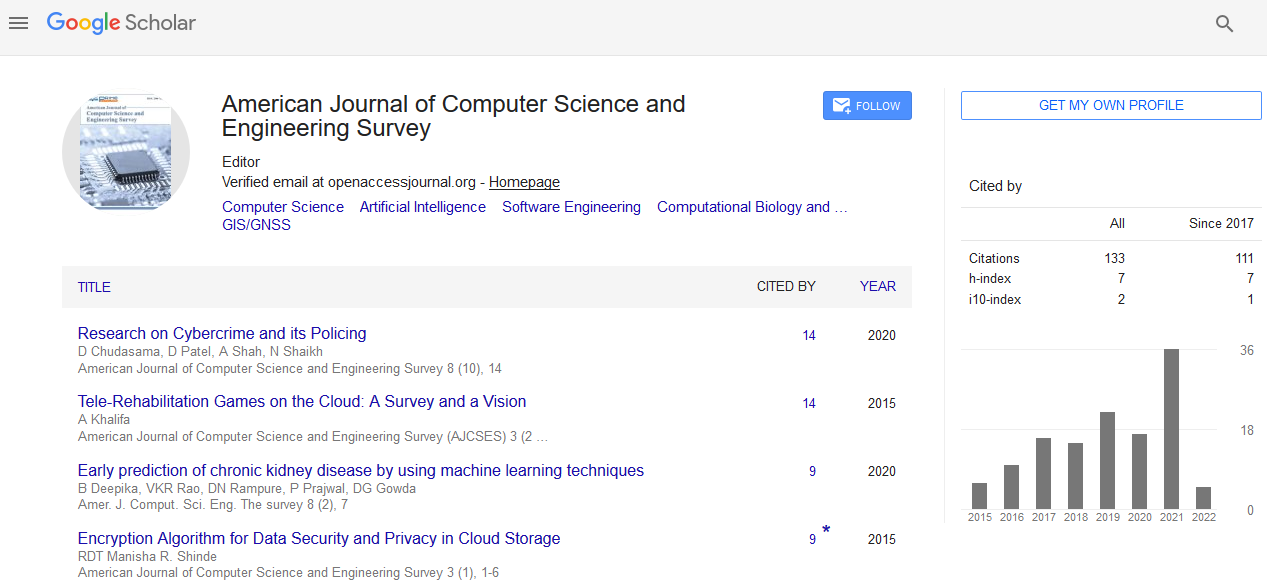Short Communication - (2023) Volume 11, Issue 4
Product Feedback Surveys: Driving Customer-Centricity
Howel Eslamy*
Department of Bioengineering, Yale University, USA
*Correspondence:
Howel Eslamy,
Department of Bioengineering, Yale University,
USA,
Email:
Received: 29-Nov-2023, Manuscript No. ipacses-23-18462 ;
Editor assigned: 01-Dec-2023, Pre QC No. ipacses-23-18462 (PQ);
Reviewed: 15-Dec-2023, QC No. ipacses-23-18462 ;
Revised: 20-Dec-2023, Manuscript No. ipacses-23-18462 (R);
Published:
27-Dec-2023, DOI: 10.36846/2349-7238.23.11.40
Introduction
Product feedback surveys serve as a cornerstone for businesses
seeking to understand customer satisfaction, identify areas
for improvement, and enhance product development. These
surveys facilitate direct communication between businesses
and customers, offering valuable insights into user experiences,
preferences, and suggestions for enhancements. A welldesigned
product feedback survey can yield actionable data
crucial for shaping product strategies and driving innovation.
Product feedback surveys are instrumental in collecting
firsthand feedback from users about their experiences, opinions,
and satisfaction levels with a product or service. Surveys help
businesses pinpoint areas that need improvement, such as
usability issues, feature requests, or areas where the product
excels. Insights gleaned from feedback surveys guide iterative
product improvements, ensuring that the development aligns
with user needs and preferences.
Description
Well-defined questions focused on usability, functionality,
satisfaction, and specific aspects of the product provide
actionable insights. Accessible surveys that can be easily
distributed through various channels, including email,
websites, or within the product interface, enable broader
participation. Incorporating open-ended questions allows
users to provide detailed feedback, offering deeper insights
into their experiences and suggestions. Feedback surveys
highlight issues that users face, enabling businesses to address
these pain points and improve user experience. Understanding
user preferences aids in developing features that align with
user needs, enhancing product usability and appeal. Engaging
users through feedback surveys makes them feel heard and
valued, fostering a sense of ownership and loyalty towards the
brand. Surveys create a channel for ongoing communication,
fostering a dialogue that strengthens customer relationships.
Continuous feedback drives iterative product improvements,
ensuring that the product evolves to meet changing user
expectations. Innovative ideas and suggestions provided by
users through surveys can spark new directions for product
development. Too many survey requests can lead to survey
fatigue and decreased response rates, affecting the quality
of feedback. Interpreting qualitative feedback and converting
it into actionable insights can be challenging without proper
analysis tools. Product feedback surveys serve as invaluable
tools in understanding user experiences, gathering insights, and
driving product innovation. By incorporating user perspectives
into the development cycle, businesses can create products
that better meet user needs, enhance satisfaction, and foster
long-term customer loyalty. However, it’s essential to craft
surveys thoughtfully, respect user time, and effectively analyze
and act on the received feedback to derive the most significant
value from these surveys. Product feedback surveys offer
numerous advantages for businesses seeking to improve their
products, enhance user satisfaction, and drive innovation [1-4].
Conclusion
Here are the key benefits of leveraging product feedback
surveys: Surveys provide direct insights into how users interact
with products, identifying pain points, preferences, and areas
needing improvement. Feedback surveys help assess the ease
of use and functionality of a product, aiding in optimizing its
design and functionality. Feedback surveys guide iterative
product development, allowing businesses to focus on
specific areas that users find challenging or less satisfactory.
Product feedback surveys play a pivotal role in shaping
product development, fostering user engagement, and driving
business growth. By actively seeking and acting upon user
feedback, businesses can continuously improve their offerings,
strengthen relationships with customers, and stay competitive
in an evolving market landscape. The insights gleaned from
these surveys serve as a compass, guiding businesses towards
creating products and experiences that align closely with user
needs and preferences.
Acknowledgement
None.
Conflict Of Interest
The author has declared no conflict of interest.
References
- Suzuki K (2017) Overview of deep learning in medical imaging. Radiol Phys Technol. 10: 257-273.
[Crossref] [Google Scholar] [PubMed]
- Litjens G, Kooi T, Bejnordi BE, Setio AAA (2017) A survey on deep learning in medical image analysis. Med Image Anal. 42: 60-88.
[Crossref] [Google Scholar] [PubMed]
- Aslam I, Fleischer A, Feldman S (2015) Emerging drugs for the treatment of acne. Expert Opin Emerg Drugs. 20: 91-101.
[Crossref] [Google Scholar] [PubMed]
- Burke BM, Cunliffe W (1984) The assessment of acne vulgaris-The Leeds technique. Br J Dermatol. 111: 83-92.
[Crossref] [Google Scholar] [PubMed]
Citation: Eslamy H (2023) Product Feedback Surveys: Driving Customer-Centricity. Am J Comp Science. 11:40.
Copyright: © 2023 Eslamy H. This is an open-access article distributed under the terms of the Creative Commons Attribution License, which permits unrestricted use, distribution, and reproduction in any medium, provided the original author and source are credited.

